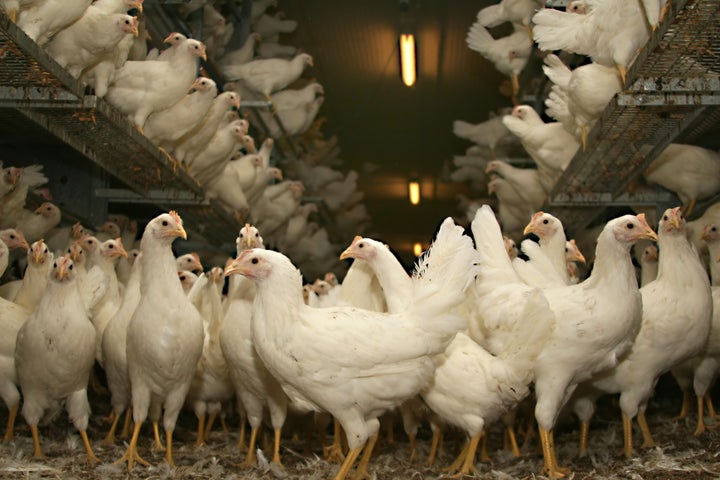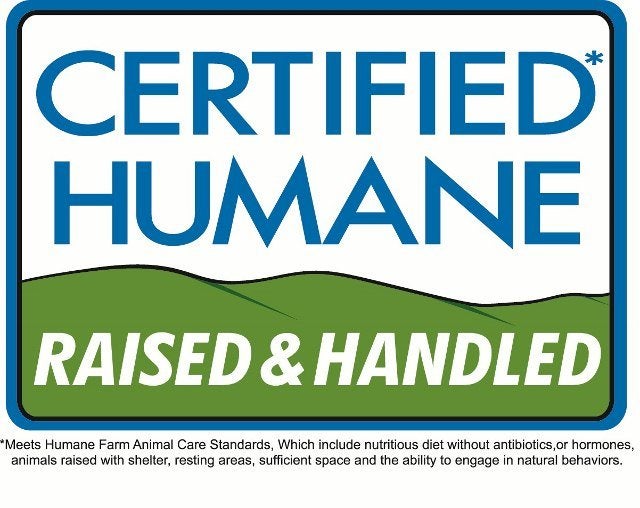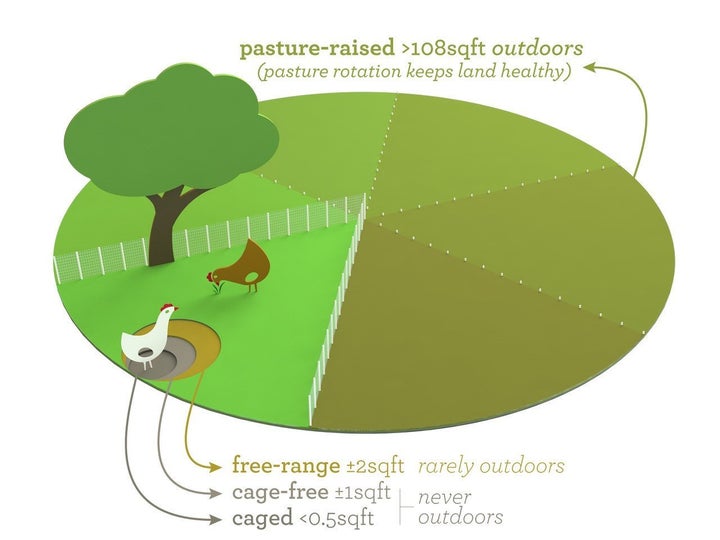Buying eggs at the grocery store can be an anxiety-inducing task. There are a plethora of options, all touting one humane label or another. Cage-free, free-range, pasture-raised ― they all indicate how much space the hens get. Most of the labels sound good, but what actually is good?

Some of these labels are regulated by the USDA, though those regulations are not very specific (and pasture-raised isn’t regulated by the USDA at all). The Humane Farm Animal Care, a non-profit certification organization dedicated to improving the lives of farm animals, developed a more detailed guideline. It’s what you can expect when you see these egg claims in conjunction with the HFAC certified humane label on a cartoon.

Here’s what’s what:
Cage-free is regulated by the USDA, but it only means that the hens don’t live in cages. The term does not specify or indicate how much space they have, or whether or not they see the outdoors. Typically these hens are in a barn or other similar facility. Their living conditions can be cramped, but it isn’t always the case. If cafe-free eggs comes with a certified humane status given by the HFAC, that means the hens were given at least 1.5 square foot of space each.
Free-range is also a term regulated by the USDA, and it means hens were given continuous access to the outdoors during their production cycle. This does not guarantee that a hen ever actually stepped foot outside, it just means there was a way for them to do so. It’s one step more humane than cage-free in philosophy, but according to NPR, it might just mean that the hens had a “few small doors that lead to a screened-in porch with cement, dirt or a modicum of grass.” To be free-range and certified humane, there must be a minimum of two square feet of outdoor space per bird.
Pasture-raised is not regulated by the USDA. But in order for pasture-raised eggs to also be labeled certified humane, it means that the ladies were given ample space to roam outdoors ―we’re talking 108 square feet ― but also have access to a barn for cover. This mandated space means there’s ample room to allow for rotating the flocks, ensuring that they have fresh food to pick at.
Here’s a graphic, provided by Vital Farms, that gives a visual for what these different terms may look like.
